Posts Tagged gardening
Garden Design for Clay Soils
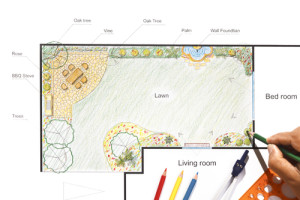 Clay soil is definitely an acquired taste for most gardeners, yet you might start swearing by clay soil once you hear some of the benefits listed below. First, though, what the heck is clay soil and how can it benefit your garden?
Clay soil is definitely an acquired taste for most gardeners, yet you might start swearing by clay soil once you hear some of the benefits listed below. First, though, what the heck is clay soil and how can it benefit your garden?
Clay Soil Vs. The Competition
Generally when you walk into a nursery, outdoors department or speak with a landscape maintenance company, you might be steered more towards silt soils or loam soils before clay. That’s because clay soil is composed of tiny plates or granules that can harden over time.
You’ve no doubt had the experience of plunking your shovel down into the ground, ready to get your garden going in the spring, and run up against clay. In spite of its hardness, though, clay soil is great for retaining moisture, nourishing your garden as well as retaining nutrients and fertilizers between individual clay particles.
Loam, relatedly, is a combination of clay, sand and silt and is very versatile, moldable and just easy for even inexperienced gardeners to work with.
Benefits of Clay
Part of the reason that loam soil is so moldable, to our main point, is that loam contains clay. The clay in the loam ensures that what you’re working with clumps into granules whereas the silt and clay components of loam help to retain moisture and nourish the plants in your garden.
Clay soil works wonderfully for annuals as well as perennial plants since the clay allows these plants to get a firm (and nourishing!) hold with their roots. The grip that perennials and annuals get with clay can withstand otherwise harsh humidity and temperature changes.
In short, clay’s fantastic as a garden design foundation since it provides a hearty root structure and allows plants to withstand harsh conditions. Moreover, you won’t need to water or fertilize as much with clay as with other soils. All good things.
Working with Clay Soil
Clay soil as a garden design foundation can accommodate a pretty wide range of shrubs, climbers, conifers and trees. Everything from popular conifers like ginkgo biloba and a deciduous evergreen like cotoneaster to rosa and fuchsia shrubs makes a great complement to clay soil.
To provide even more nutrients for these clay-compatible shrubs and conifers try adding a light mulch to your garden. Leafmold, composted bark and long manure work especially well with clay soil in terms of providing an easy-to-work-with mulch that does wonders for your plants.
Mulching Your Clay Foundation
When you actually get down to planting, mulching the plants up to three inches is a good idea for a few reasons.
Just a few inches down allows the right amount of moisture to hit your plants’ roots while tamping down weed growth and providing shielding from the elements.
One problem that people have with clay soil is that they sometimes overwater. Remember that clay soil retains water and moisture better than other garden foundations and, therefore, doesn’t need around-the-clock watering.
You’ll know that you’re doing too much watering when you notice a lot of the plants visibly retaining water and you notice globs of water on the clay surface the next day. These would both indicate that it’s time to cut back and let clay soil work its magic.
Creating the Perfect Garden
If you understand how clay’s small granules retain moisture and you know not to overwater, clay can offer a ton of benefits beyond more favored soil types.
You might consider planting eucalyptus trees, gorgeous flowering plants like bergenias and some of the conifers mentioned above for the perfect garden design. Contact Xeriscape today to get started.
What is Drip Irrigation and Its Advantages?
 You may have heard the phrase “drip irrigation” thrown around and not been able to make heads or tails out of it. Fortunately, drip irrigation isn’t that complicated a concept to really understand.
You may have heard the phrase “drip irrigation” thrown around and not been able to make heads or tails out of it. Fortunately, drip irrigation isn’t that complicated a concept to really understand.
What is Drip Irrigation?
Irrigation is simply the process of artificially applying water to land or soil in order to stimulate growth. Farmers and property owners around the country rely on irrigation to create fuller crops or more appealing lawns.
Drip irrigation, also referred to as trickle irrigation, is a method of irrigation that’s extremely environmentally friendly. This is because drip irrigation applies water directly to the plant’s roots, root zone or the soil itself.
The fact that drip irrigation sends water directly to the surface that needs it most with a plastic device known as an emitter is especially relevant today. Parts of California, Texas and the Southwestern United States are experiencing their worst droughts in years, so a more intelligent irrigation system is a must.
Drip irrigation actually uses tubes and hoses to efficiently send water to a plastic emitter, which in turn sends water directly onto the plant’s roots or soil’s surface. This whole process saves a ton of water and fertilizing material.
More Advantages of Drip Irrigation
Even for farmers or property owners who like using fertilizer, drip irrigation allows you to retain nutrients while using less fertilizer – all the while achieving even better results!
Drip irrigation also allows you to keep the moisture level constant between the root zone and field capacity. And just to clarify, the term “field capacity” is simply the amount of moisture in the soil after the excess water has drained away.
Here’s some more good news for anyone who wants to try out drip irrigation – drip irrigation ensures less soil erosion and fewer weeds grow on your property. For farmers, this is a huge boon and directly increases their crop yield and profits. For regular property owners, this leaves your lawn looking crisp, green and lush.
For those concerned about rising energy prices, you’re bound to like drip irrigation as well. The process of drip irrigation is extremely water efficient and operates under less pressurization than most other types of pressurized irrigation, which translates to money saved on utility bills.
Because of drip irrigation’s higher efficiency, you’re also talking about smaller labor costs compared to other forms of irrigation.
Control in Your Hands
Due to the fact that controllable amounts of water make their way to the soil’s surface or the roots of plants, drip irrigation puts far more control into your hands.
You can regulate the amount of water that gets sent to each individual plant or section of your property by regulating the water pressure going to each output nozzle.
Drip irrigation is saving you water all the while as well since drip irrigation is estimated to use less than half the water of conventional sprinkler systems. So, you’re using less water and experiencing less nutrient runoff and soil erosion: This is definitely a recipe for long-term success.
Drip irrigation can even be set to a timer so that you can fully automate the watering process or cut it on/off at your discretion throughout the day. A drip irrigation system is highly adaptable and can be changed literally overnight to better suit the changes taking place on your property.
You can find out more about drip irrigation or set up an appointment by getting in touch with a Xeriscape lawn care professional today.
Xeriscape Landscaping Ideas for Easy Gardening
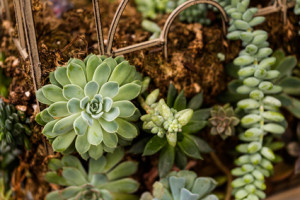 Xeriscape is a type of gardening that focuses on conserving water. You typically won’t see any lush green lawns; instead, xeriscape yards and gardens are full of local and drought-resistant plants, and typically involve creative uses of windbreaks and drip irrigation. They’re gaining popularity not just for their eco-friendliness, but because they’re very easy to maintain.
Xeriscape is a type of gardening that focuses on conserving water. You typically won’t see any lush green lawns; instead, xeriscape yards and gardens are full of local and drought-resistant plants, and typically involve creative uses of windbreaks and drip irrigation. They’re gaining popularity not just for their eco-friendliness, but because they’re very easy to maintain.
This school of gardening breaks a lot of the rules that many landscapers follow. It can be tricky to know where to get started, but here are a few ideas.
Research Xeriscape and Use Local Plants
We can’t advise you about what plants you should be using, because it’s particular to your region and your aesthetic tastes. Ideally, you want to rely as much as possible on rainfall, and the best way to do that is to use drought-resistant plants that are adapted to your area. Exotics are typically harder to maintain, and invasives often suck up water. An added benefit to choosing local plants is that local wildlife will seek your xeriscape garden out!
So head to your local library, check online, or go through a local greenhouse and ask questions of the staff there. Landscaping 101 applies here: be sure you’re choosing plants that will thrive in your soil’s pH, and with the different amount of sunshine your xeriscape gets. Remember to choose a variety of colors, and try to choose plants that will bloom over the course of the year rather than all at once.
Compost Before You Plant
After your plants are in the ground, it can be tricky to compost your xeriscape. Instead, add the compost while you’re prepping the soil for your plants. This doesn’t just make the soil richer — it also helps it retain moisture.
Permeable Paving
Asphalt, tile, or other paving surfaces catch water and cause it to puddle and eventually evaporate, where it’s lost. This “hardscaping” can also become very hot in the sun, which affects moisture absorbtion and can make your plants wilt. Using gravel, sand, or a comparable paving material on your paths lets water seep down into the soil to water your xeriscape plants.
Grade on a Curve!
Try adding a slight grade, or even terracing, to your xeriscape garden. Remember, it doesn’t help if the water puddles, or runs out to the street. You want the water to flow gently downhill, so that it trickles over the surface of the soil and is absorbed.
Use Mulch
Mulch heavily around your plants! Three to four inches is enough to keep the soil’s moisture in, and as the mulch’s bottom layers degrade they fertilize the soil. While gravel is another xeriscape option and it works great, some people find that it makes their gardens look drier and more like a desert, compared to how mulch looks.
Rainwater Harvesting and Clever Irrigation
Even with clever xeriscape techniques, you will still need to water your garden. This is particularly important for plants that are young or just getting settled, because they’re still building their root systems. Collect water to irrigate by hooking a rainwater barrel up to your gutter. Make sure you water during the cooler evening hours, and try using a soaker hose or an automated drip irrigation system. These saturate the soil, so as little as possible is lost.
5 Steps to Choose the Best Landscape Maintenance Services
 If you are looking for the best landscape maintenance service, finding it will take more effort than merely looking in the phone book. The unique nuances and needs of your property, as well as the niche of each company will go a long way in determining which landscape maintenance provider to choose.
If you are looking for the best landscape maintenance service, finding it will take more effort than merely looking in the phone book. The unique nuances and needs of your property, as well as the niche of each company will go a long way in determining which landscape maintenance provider to choose.
Don’t Get Hooked by a Landscape Maintenance Low Price
Some landscape maintenance services will submit a very low bid in an effort to win your job. However, these bids are often accompanied by low quality project results. Look for bid contractors who will use high quality materials and safe equipment at all times. The quality of the landscape maintenance service provider’s craftsmanship is always worth the higher cost.
Check Track Records
Do not hesitate to contact the prior customers, reviews and references of various maintenance services. Each should be willing to provide you with a reference list who can testify to the quality of the work. Try to find a customer who had a job performed within the past year at an equal or a greater value than your current job. This way, you will be able to make an informed comparison when deciding on which landscape maintenance service is the best for your property.
The Type of Landscape Maintenance Work
Each landscaping company has a specialty area. Some are good at any number of projects. The key is to find the one that has a history of installing or maintaining the area of your yard that needs attention. Communicate exactly the type of work that you want done and your budget limitations. This will help you narrow your search to find candidates who can handle the specific challenges involved in your nuanced yard. Keep in mind that some landscapers offer maintenance services only, so vet each company thoroughly before progressing to more detailed matters.
Qualifications
Make sure that each landscape maintenance service is properly insured so that you are not liable for accidents that occur on your property. Ask for valid proof of the insurance before work commences. Find out the professional affiliations that the companies belong to as well. If they are active in professional associations, they are more likely to stay abreast of industry trends. Then, find out of they are licensed. Those that are certified by the state will provide proper employee training and will be held to the highest legal standards.
Build a Criteria List
Contact each potential landscape maintenance service and ask them a series of questions. You can mark off whether each meets your specific criteria. The one with the lowest bids and the most check marks will be awarded the project. Your checklist should contain key requirements like a company that is properly certified, licensed and insured. Get a written contract that accounts for a project price, material list and quality guarantees before work starts. Also, be sure to ask each candidate’s references whether the companies were able to complete the projects within the originally estimated timeline. Once you have gathered all of the pertinent information, you can make an informed decision about which landscaping company to choose.
Landscape Service Niches
Each landscape maintenance service company tends to do at least one thing very well. Some do it so well that they develop a niche in the field. If you are looking for a company that handles yard maintenance, repair, irrigation and water saving landscapes, give us a call today.
Picking the Best Landscape Maintenance Services
 Landscape maintenance goes well beyond regular lawn care in ways that might surprise you. For starters, if you’ve ever wondered why local parks and upscale homes look so great year round, the reason is probably regular landscaping.
Landscape maintenance goes well beyond regular lawn care in ways that might surprise you. For starters, if you’ve ever wondered why local parks and upscale homes look so great year round, the reason is probably regular landscaping.
From pruning and lawn care to a reliable irrigation schedule and weed-reduction services, a landscape maintenance company remains an affordable way to turn heads and quickly increase your home’s curb appeal.
Myriad Benefits of Landscape Maintenance
Contracting out your landscape maintenance services, for instance, can increase your home’s resale value by over ten percent virtually overnight. A landscape maintenance company can also assist property managers lease space and offer a more professional face to the public.
A landscape maintenance company can work to expand on what’s already great about your home’s lawn and garden as well. Services like lawn edging, mulching and irrigation significantly enhance your home’s curb appeal and can give you more reasons to take daily pride in your home.
Pruning your home’s bushes and snipping overhanging branches are additional ways that a landscape maintenance company gives value back to homeowners. In short, a landscape maintenance company that can help you get your lawn, garden and walkway in shape is a win-win for you and your neighbors.
Unique Services Available to Homeowners
If you’re somewhat fuzzy on the nuts and bolts of irrigation, mulching and the right watering schedule for your home’s soil and climate, then you’re just like millions of homeowners from around the country.
A landscape maintenance company, fortunately, has decades of experience testing for proper pH levels, installing and/or maintaining sprinkler systems, and removing weeds or unsightly overgrowth from your yard.
If a landscape maintenance company determines, for example, that your pH levels are out of whack, then a lime treatment can be used to get your lawn back on its feet.
This is all a huge boon for homeowners looking for a little extra time on the weekends as well as property managers who want to spend less time worrying and more time leasing space.
Interestingly, some studies even show that properly placed trees and plants can lower your HVAC costs by as much as one-fifth. This might seem shocking until you consider the heat gain during the hottest months – or the heating costs squandered to poor ventilation – due to a lack of shade around your home or commercial property.
From relatively simple jobs like mowing and mulching to larger projects like aeration and irrigation, a full-service landscape maintenance company is truly a one-stop-shop for all of your home’s landscaping needs.
Hiring a Landscape Maintenance Company
Although you can probably find dozens of companies with mowers and leaf blowers in your area willing to provide simple services, a landscape maintenance company can provide more sophisticated services (e.g., irrigation) that bring experience and professional know-how to bear.
Many states even require that landscape maintenance companies have licenses before offering their services to the public. This coupled with the fact that a full-service landscape maintenance company can help with pest and weed control, sprinkler systems and pH detection makes this an easy call.
To reiterate, a landscape maintenance company can help homeowners and property managers in crucial ways – improving curb appeal, enhancing your home’s energy efficiency, and eliminating pests and weeds.
If you’ve always wanted a lusher lawn, contact the professionals at Xeriscape today for more information about a host of maintenance, repair and irrigation services.
Go Native, Save Water: Xeriscape Gardening
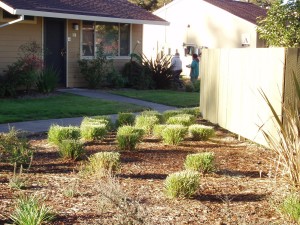 The information age has brought with it a flood a varying techniques in the fields of landscaping, gardening and ecological design. In keeping with the sustainable nature of the best of them, xeriscape gardening is defined by its optimal use of a minimal amount of water. This approach to gardening has been developed in the arid regions in the world, chiefly in the American mid-west, as a natural response to the climate. Xeriscape is most effective when the need for supplemental irrigation is eliminated and the design of the garden promotes symbiotic relationships that provide benefits. Environmental conservancy is xeriscape gardening’s top priority, but aesthetic design has received as much consideration. At its best, xeriscape becomes a melding of both utility and beauty.
The information age has brought with it a flood a varying techniques in the fields of landscaping, gardening and ecological design. In keeping with the sustainable nature of the best of them, xeriscape gardening is defined by its optimal use of a minimal amount of water. This approach to gardening has been developed in the arid regions in the world, chiefly in the American mid-west, as a natural response to the climate. Xeriscape is most effective when the need for supplemental irrigation is eliminated and the design of the garden promotes symbiotic relationships that provide benefits. Environmental conservancy is xeriscape gardening’s top priority, but aesthetic design has received as much consideration. At its best, xeriscape becomes a melding of both utility and beauty.
The Principles of Xeriscape
As conceived by Denver Water, xeriscape gardening’s most revered proponent, these seven guiding principles provide the foundation for all considerations within the field. Each principle holds an entire discipline within itself, which means that there is always more to learn and improve upon in this field.
- Planning and Design are the cornerstones of effective gardening, which requires careful attention to your specific environment.
- Soil Management is about knowing what nutrients your selected plants need and what nutrients are available in the soil. Composting is a great way to reinvigorate malnourished soil.
- Plant Selection is an integral part of xeriscape gardening. Thousands of species exist in arid conditions, each with benefits and beauty to offer.
- Turf Minimalism is crucial because the water needs of most grass lawns makes them impractical for dry climates.
- Diligent Irrigation may be the reason you’re interested in xeriscape gardening to begin with. Water is an invaluable resource and appropriate use of it is essential to environmental conservancy.
- Mulch can be composed of several materials such as leaves, wood chips, pine needles and bark. It is spread over the surface of the soil to help with water retention, fertility, prevention of erosion, and reduction of weed growth.
- Maintenance in the form of weed pulling, mulching, and general upkeep should be combined with constant observation to check if your garden layout is working to its full potential.
The Benefits of Xeriscape
- Reduced Water Consumption is both the key aspect of xeriscape gardening and a great benefit of it. It means using less water and making better use of it. Not only will this save you money, but you will be helping your community and environment as well. Re-appropriating rainwater can help you prevent evaporation and runoff, and your garden’s layout can be optimized for better use of it.
- Less Maintenance is required from a xeriscape garden. Much less fertilizer is used, which helps urban runoff pollution, lawn mowing becomes nigh unnecessary, and simple irrigation systems can handle all of your watering needs.
- Pest Control is an added benefit of a really well thought out garden layout. Certain xeriscape friendly plants ward off insects, while prickly cacti do the same for intrusive mammals. Plant selection also enables you to create a sanctuary for desirable birds and insects.
- Property Values Rise when you drought-proof the terrain around your home. Likewise, the design opportunities available to xeriscape can make for some exquisite gardens.
There are an abundance of tips and tricks available for do-it-yourself xeriscape gardening, but expert consideration reaps the true benefits of the art form. Xeriscape specialists develop an uncanny ability to read an environment and discern its possibilities. With a little help, and dedication to the sustainability principles of xeriscape you could be looking at a lower water and power bill, a productive and efficient garden, and a beautiful area in which to relax.
10 Ways to Save Water in Your Yard
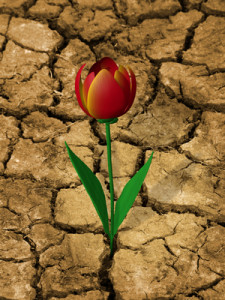 As a homeowner or business owner, it may seem impossible to keep your yard attractive and thriving while trying to save water. Whether your region is going through a drought, city water prices are through the roof, or your area is implementing bans on watering yards, learning how to save water is becoming essential.
As a homeowner or business owner, it may seem impossible to keep your yard attractive and thriving while trying to save water. Whether your region is going through a drought, city water prices are through the roof, or your area is implementing bans on watering yards, learning how to save water is becoming essential.
Here are 10 ways you can save water in your own yard:
1. Implement Xeriscape Landscaping
For decades, xeriscape has been practiced by the landscaping industry. This concept allows you to have a livable outdoor space that doesn’t require major amounts of water. While xeriscapes still need to be regularly maintained, their smart designs save water, as well as your time and major backaches in the long run.
But don’t try to implement the principles of xeriscape alone. Your local landscaping company will be your best resource for establishing one. According to LandscapeNetwork.com, “For anyone contemplating a xeriscape, selecting an experienced designer is vital to success… The skill set in demand is a firm knowledge of both local native species used for landscaping, plus the array of imported species from dry climates around the world that expand our options considerably. There is no better way to make your home environmentally green and create a model landscape for water conservation.”
2. Plant Native Plants or Drought-Resistant Plants
Use native plants in your yard to save water. These plants are acclimated to your climate and are used to your region’s rainfall. Drought-resistant plants like daylilies contribute bright, cheery colors to your yard’s design without hogging water.
3. Use Mulch
Mulch such as wood chips or lava rock (not black plastic) is handy at preventing weeds. However, it also keeps moisture in the soil. It shades soil so that the soil’s temperature doesn’t heat up, translating to water savings.
4. Adjust Sprinkler Irrigation Systems
If you use sprinklers but they’re not adjusted properly, they won’t save water. Mist settings may cause water to blow in the wind or evaporate before it reaches your thirsty yard. Settings with larger droplets ensure that the water is reaching your plants. Make sure sprinklers are pointed to your lawn and not spurting water wastefully at sidewalks.
5. Yard Watering
The time of day that you water plants is important. Plan on watering around cooler times of the day like dusk or dawn. This will ensure that you save water since the water isn’t merely evaporating before it hits the ground. Don’t water when it’s windy.
6. Harvest Rain Water
Rainwater harvesting means you accumulate and deposit rainwater on-site so it doesn’t merely create run-off. For example, rain barrels can capture rain coming off your roof. You can save water and money simultaneously!
7. Mow the Grass
If you mow your grass too much, you could be contributing to water waste. Keep your main lawn around 3 inches tall so the soil retains water but water isn’t merely soaked up by tall grass (which can also harbor pests).
8. Pay Attention to Fertilization Times
Don’t fertilize your lawns during hot, dry weather. This could exacerbate current drought problems. Use a slow-release fertilizer to save water.
9. Create Decks and Paths
Add patio stones, gravel paths, and decks to decrease the amount of area in your yard that needs to be watered. Your landscaping company will have ideas on how these items will look great in your yard but contribute to a functional design too.
10. Form Ditches and Basins
Form ditches and basins around your plants. This practice will keep a well of water near your plants’ roots.
Front Yard Flower Bed Ideas – DK Landscaping
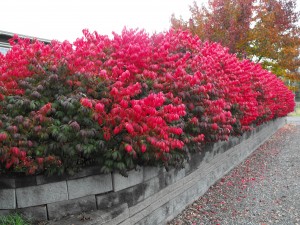 Want to make your home look calm, inviting, and happy? Add flower beds to your property for constant color. Use the beds to delineate property or break up bland expanses of lawn grass and dirt. Finding flower bed ideas is simple, but you should be sure of what you need and why. There are so many possible flower bed ideas that you can get easily bogged down in details if you start to look for designs without taking issues like drought and level of care into consideration. Pinpoint non-negotiable issues like those first to make designing your front yard a lot more efficient.
Want to make your home look calm, inviting, and happy? Add flower beds to your property for constant color. Use the beds to delineate property or break up bland expanses of lawn grass and dirt. Finding flower bed ideas is simple, but you should be sure of what you need and why. There are so many possible flower bed ideas that you can get easily bogged down in details if you start to look for designs without taking issues like drought and level of care into consideration. Pinpoint non-negotiable issues like those first to make designing your front yard a lot more efficient.
Drought-Proof Flower Bed Ideas
Drought is probably going to be one of your main considerations when looking at flower bed ideas. Many areas of the country are experiencing water shortages, and anything you plant has to be able to deal with a lack of abundant water. That doesn’t mean you have to plant cacti — just look for cultivars of flowers that have been bred to be less water-needy. Native flowers are always a wonderful choice in this case as they are already somewhat adapted to their region’s fluctuating water supplies. Plant breeders have been working on drought- and disease-resistant cultivars of all sorts of plants for years, and it’s become easier to find these in garden centers and from landscaping companies when looking at flower bed ideas.
Easy Care Flower Bed Ideas
Ease of care is another big consideration for flower bed ideas. Even if you have a landscaping company taking care of most of your garden, you’ll still have to do some minor care yourself. If you don’t feel up to that, you’ll want flower varieties that can handle benign neglect. Again, native flowers tend to be a little better for this, though there are easy-care species from all over the country if you’d like more variety for your flower bed ideas.
Location Ideas For Your Flower Bed
Now take a look at location to further refine your flower bed ideas. Flower beds that will be near the street need to be able to handle road salt spray, for example, if your area tends to have occasional snowfall in spring or fall. That’s not so much of a problem with annuals, as you’d be removing them anyway, but if can be for perennial or biennial flowers.
Flower bed ideas for spaces near fences can have species of varying heights, so those plants nearer the fence should be taller. The shorter flowers near the edge of the bed may need to be shade-tolerant if the bed is positioned where the fence or taller plants might block a lot of the sunlight.
Reduce Insects
Flowers planted next to the house need to be pest-resistant if possible. While it is impossible to guarantee that a flower will never attract a bug, if you have flowers that tend to attract pests, those pests could get into your house. Ask your garden center or landscaping company to show you flowers that have a reputation for repelling insects, too, such as marigolds, petunias, and nasturtiums. As you come up with ideas for other areas of your yard, you can work a few of these plants in so that you can reduce the number of pests you have to deal with overall. Start talking to landscape design companies about flower bed ideas and species that fit what you need for your yard’s environment, and you’ll have a beautiful yard in no time.
Backyard Beauty On A Budget
Want to build the garden of your dreams, but don’t want to shell out your hard-earned dough? Creating a low-maintenance yard on a budget has its challenges, but there are many ways to meet them. Good planning, a little gardening knowledge, creativity and a willingness to think outside the window-box are all you need to make your yard an enjoyable oasis for family and visitors alike without breaking the bank. DK Landscaping is here to you a less-expensive way to make your yard a better place!
DEFINE YOUR SPACES
Clearly defining the space you need whether it be, dining area, cooking area, shady lounging area, play area can make a great impact on your yard. Doing this can be as inexpensive as repositioning the furniture and accessories you already have. You may also want to build or buy a storage shed to keep kids’ toys out of sight when not in use.

BUY TREES
If you have to spend money on the landscape spend it first on trees. you should always put trees in your landscape before anything else. It is worth a little extra money to get a good landscape tree. There are a lot of trash trees that will send up suckers, leave huge messes on your lawn, require hours of pruning, and die just as your landscape matures. For shade trees, named hybrid maples, oaks, and sycamores are almost always a safe bet. Avoid birches, most elms, poplars, and some ashes which grow fast, but are ultimately short-lived.
THINK VERTICALLY
If your backyard features a large, flat lawn, add some dimension by positioning boulders (available at landscaping supply stores) throughout the space. You might choose to arrange them individually or cluster a few together. Don’t be afraid to cut into the lawn to accommodate them and leave some space around for planting colorful perennials or small shrubs.
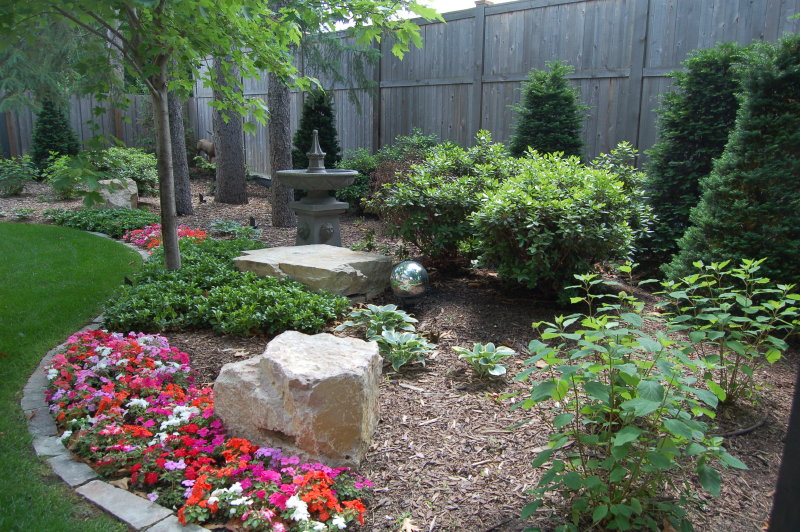
BUY PERENNIALS
As tempting as all those beautiful annuals are on the nursery shelves, think ahead. Every year you will need to replace them, as they die. This is one of the quickest ways to burn through a landscape budget. If you are willing to start annuals from seed (or any other plant for that matter) go for it! Just don’t buy them in a pot (or pony packs, or flats). Perennials on the other hand get bigger and more attractive year after year. A single $2, 4″ potted perennial can be a 8-foot mound of color within three years. The annual will be about the same size as the pot and will have cost three times as much.
TIP: Buy in the fall when perennials are on sale. Trees, shrubs and perennials are the bones of any garden. Unfortunately, they cost an arm and a leg at the beginning of spring and summer. Everyone thinks that you have to plant these at the beginning of the season. The reality is that they can also be planted in the fall when temperatures are cooler. The best part is that trees, shrubs and perennials go on sale at the end of the season, from anywhere between 5o to 75 percent off their regular price.
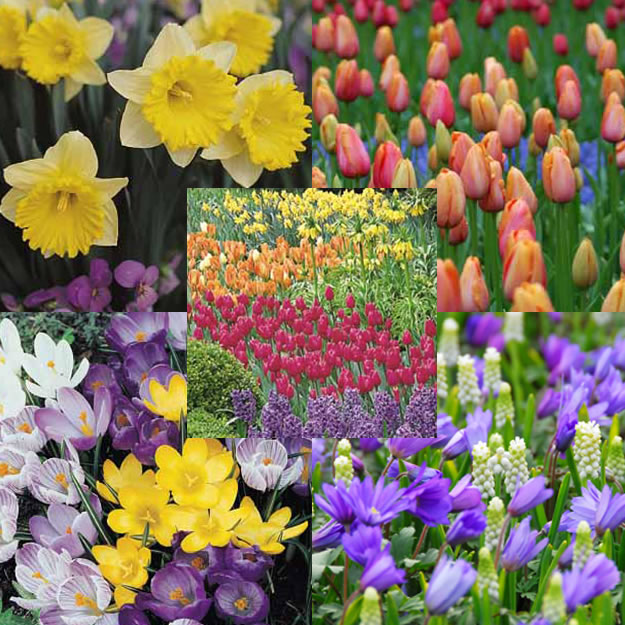
Freecycle and Craigslist
Check out Freecycle and Craigslist to find all manner of garden goodies. Everything from plant divisions to garden tools, pots, containers and even garden furniture often for deals during spring and summer.
You can easily start many plants from seed, get free divisions and cuttings from generous neighbors to help you save cash when planting your own garden. Hardscape goods are really expensive, but you can easily source them from other gardeners who are undergoing remodeling projects. Buying trees, shrubs and perennials at the right time of the year will earn you the biggest savings when landscaping your yard. Use these frugal gardening tips to help you easily landscape your yard into the verdant paradise of your dreams. If you’re interested in learning more about landscaping, consider contacting DK Landscaping for a free consultation (707) 280-3632. Serving the greater Sonoma County areas.
Stop and Smell The Flowers!!
Flowers! From incredible wedding bouquets and beautiful Mother’s Day arrangements to blooms we offer in the hope of soothing hurt feelings, there are many occasions and reasons for why we plant them and offer them as gifts. So As you begin to paint the picture of your landscape plan, take a moment to consider their meaning before you begin to plant. Here are a few of the most popular floral choices and the meaning that they convey:
Roses 
There is no flower that has been revered and celebrated as much as the rose. As a source of inspiration to people throughout history, roses are the definitive symbol for love and appreciation, but the different colors also have a meaning all of their own:
Yellow roses mean joy ~ Red roses mean passion ~ Burgundy roses mean unconscious beauty ~ Orange/coral roses mean desire ~ Red and white roses together mean unity ~ Pink roses mean grace and gentility ~ White roses mean worthiness
Orchids
With an exotic appearance, orchids have come to represent rare and delicate beauty. Those seeking to make a lasting impression with a unique flower have found the orchid to be a perfect choice. As both potted plants and cut flower arrangements, these tropical flowers have an undeniable appeal. Different cultures throughout history have believed in the healing, disease-fighting and protective properties of the orchid. In traditional Chinese medicine the orchid is used to help cure coughs and lung illnesses. The ancient Greeks associated it with virility, and the Aztecs were said to drink a mixture of the vanilla orchid and chocolate to give them power and strength.
Lily 
A very common flower at funerals, lilies also symbolize virtues such as purity, sweetness and friendship. The Greeks believed the lily sprouted from the milk of Hera, the wife of Zeus. White lilies signify purity and sweetness, day lilies symbolize coquetry and yellow lilies can mean falsehood or gaiety. Lilies of the Valley mean a return of happiness.
Iris Flowers
Few other flowers can match the elegant beauty of the iris. Representing faith, hope, and wisdom, the iris is a flower that can be used for many different occasions. While it is most known for its distinctive blue varieties, the iris can also be found in other colors such as yellow and white.
Tulips
With their flower meaning being perfect love, tulips can impart a sense of grace and elegance wherever they are displayed. The tulip is recognized throughout the world as one of the most popular cultivated flowers, but they are particularly associated with the Netherlands. Dutch tulips are among the leading tulip varieties within the floral community.
Carnation
As one of the most popular flowers in the world, the carnation is widely appreciated and enjoyed. Carnations are available in a variety of colors and are generally symbolic of love and fascination.
- Red carnation symbolizes love, pride and admiration
- Pink carnation symbolizes the love of a woman or a mother
- Purple carnation symbolizes capriciousness;
- Yellow carnation symbolizes disdain, rejection or disappointment
- White carnation symbolizes innocence and pure love
- Striped carnation conveys refusal
DK Landscaping are your landscaping and gardening experts. If you need a company to spruce up your existing landscape or custom design one, call us.. DK Landscaping serves Petaluma, Cotati, Rohnert Park, West County, Santa Rosa and Windsor areas. Call us today ![]() 707.280.3632.
707.280.3632.






